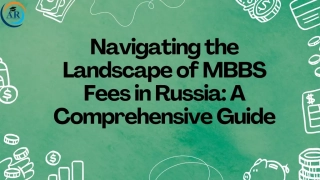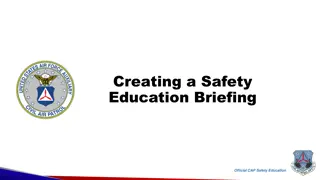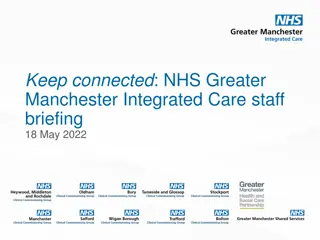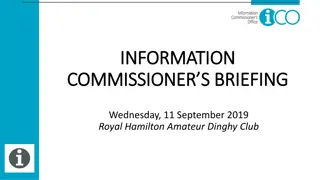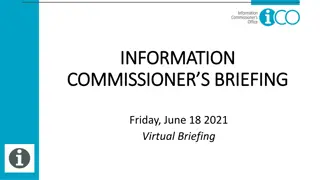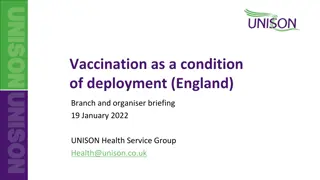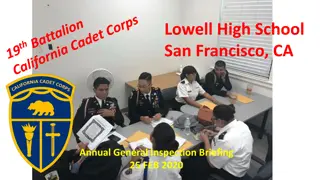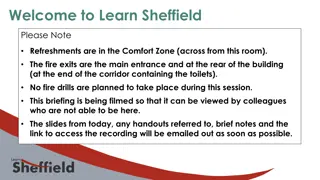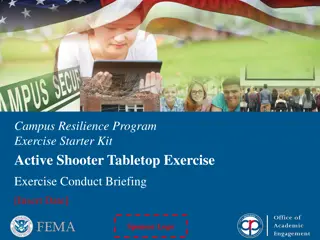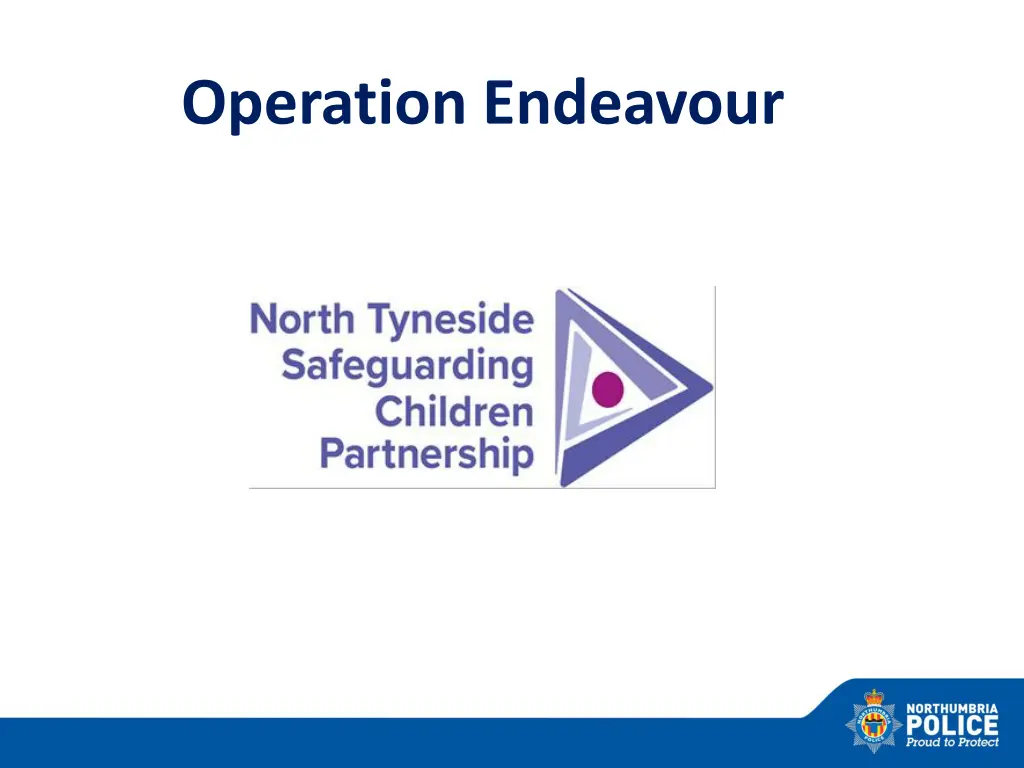
Safeguarding Children at Risk of Harm
Operation Endeavour launched on 9th December 2019 with the purpose of safeguarding children and young people at risk of harm, focusing on those who run away or go missing from home or care. Statistics from The Children's Society highlight the prevalence and risks associated with missing children, emphasizing the importance of early intervention and tailored support. Explore the impact on children and the critical role of education and youth work in addressing these challenges.
Download Presentation

Please find below an Image/Link to download the presentation.
The content on the website is provided AS IS for your information and personal use only. It may not be sold, licensed, or shared on other websites without obtaining consent from the author. If you encounter any issues during the download, it is possible that the publisher has removed the file from their server.
You are allowed to download the files provided on this website for personal or commercial use, subject to the condition that they are used lawfully. All files are the property of their respective owners.
The content on the website is provided AS IS for your information and personal use only. It may not be sold, licensed, or shared on other websites without obtaining consent from the author.
E N D
Presentation Transcript
Operation Endeavour Launch-9th December 2019 Purpose: To safeguard children and young people who are at risk of harm from going missing by ensuring appropriate services are made aware of an incident at the earliest possible opportunity. Tailored support and guidance provided to children and young people Covers all educational settings (with children aged 4 to 17 yrs) Building on the already established Operation Encompass process
Department for Education Children who run away or go missing from home or care It is thought that approximately 25% of children and young people that go missingare at risk of serious harm. There are particular concerns about the links between children running away and the risks of sexual exploitation. Missing children may also be vulnerable to other forms of exploitation (including criminal exploitation), to violent crime, gang exploitation, or to drug and alcoholmisuse.
Statistics from The Childrens Society Someone is reported missing every 90 seconds in the UK. 100,000 children and young people run away from home or care each year - that s 1 every five minutes Looked After Children are more likely to go missing than their peers. Girls are more likely to run away than boys A third of those who run away will go missing before they are 13 Children who consider themselves as disabled or having difficulties with learning are twice as likely to run away as other children A third of young people who said that they had problems with school attendance had run away Young people living in stepfamilies are almost three times as likely to have run away as those living with both parents A third of children who have had problems with drugs or alcohol or have been in trouble with the police had run away
Impact on Children It s not about running away; it s about all the problems young people face. Missing from home and missing from education is a symptom, not a problem in isolation. Project worker, The Children s Society, What to do when a child goes missing .
Impact on Children The Children s Society When a child runs away they are at risk of serious harm. Running away or going missing is also a key early indicator of child sexual exploitation. Recent research has found that as many as 70% of children who are sexually exploited go missing from home, while our research shows that: begging, stealing or sexual exploitation while away from home One in six children said that they had slept rough, or stayed with someone they just met, for at least some of the time they were away One in nine had been hurt or harmed while away from home Eight out of 10 do not seek help from anybody because they do not know where to turn, they do not feel there is anyone they can trust or they fear the consequences. One in five children had at least one harmful or risky experience such as What to do when a child goes missing - A guide for those working in education and youth work
There are a range of reasons why children and young people go missing, these include: Conflict, abuse and neglect: more than half of missing children have experienced this at home and 1 in 5 children felt forced to leave because of it. Sexual exploitation: 7 in 10 young people who have been sexually exploited have also been reported missing. Mental health issues: at least 1 in 10 missing children. Risk of suicide or self harm.
Impact on children What may children Think? Feel? Do?
On return to school/home children may react in many differentways Behaviours Quiet Withdrawn Loud Disruptive Aggressive Destructive Feelings Fear Vulnerable Anxious Isolation Shame & guilt Anger
Operation Endeavour Process - School After a child (4-17 years) is reported missing to the Police , a Child Concern Notification is created. Police send the Child Concern Notifications to the Operation Endeavour mailbox. The Front Door/Gateway team check the school the child attends and send the information to the relevant school. Key Adult to check every morning and at lunch for any Operation Endeavour emails.
Key Adult Responsibilities Check your mailbox by 10 am and again at lunch time for any Operation Endeavour emails. Inform the Police by calling 101 if the child arrives at school. Inform relevant staff and put support in place for the child on theirreturn. Ensure that Operation Endeavour information is secured so that information remains confidential. Ensure that any changes to Key Adults or email address are sent to childrenandadultscontactcentre@northtyneside.gov.uk so that the database can be updated
What can schools do? Support Police and Children s Services to locate the child Speak to the child if appropriate, when they return about what has happened Monitor children when they return; monitor attendance Contribute to a support package around the child and family (linking into the local authority) Work with the LA Missing Coordinator to facilitate the Return Home Interview process, when needed Make a referral to support services for the child, if appropriate Help the child make sense of the way they are feeling and behaving Help the child to develop coping strategies Go at the child s pace; follow their lead Acknowledge what they ve been through or what they are going through
WHAT DOES IT MEAN FOR SCHOOLS? Schools will know if a child has been missing from home and may therefore not have what they need for the day Schools will be informed of external issues that may be having an impact on the child Close partnership working Raising Awareness of Operation Endeavour: Inform parents / carers annually that the school is part of Operation Endeavour (through standardised letter, website) Promoting the initiative in school prospectus, website, newsletter, postersetc. Inform new staff and train any new Key Adults Inform the Governing Body that the school are part of OperationEndeavour
Useful Links The Children sSociety: https://www.childrenssociety.org.uk/what-we- do/resources/protecting-young-runaways Missing People www.missingpeople.org.uk 24 hour confidential helpline: 116 000 email:116000@missingpeople.org.uk NSPCC Helpline: 0808 800 5000 Email: help@nspcc.org.uk
Key Contacts-North Tyneside Front Door: 0345 2000 109 Police: 101 Dawn Hodgson (missing co-ordinator CYP) dawn.hodgson@northtyneside.gov.uk 0191 6437992 Updates for key adults to be sent to childrenandadultscontactcentre@northtyneside.gov.uk

